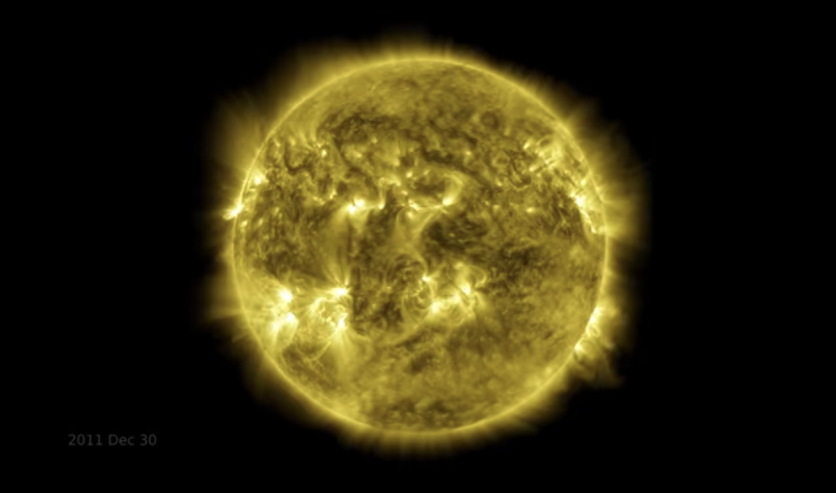The National Aeronautics and Space Administration (NASA) recently released a stunning video that compiles ten years of the sun. Every second represents a day, and the length of the journey from June 2, 2010 to June 1, 2020 takes more than an hour.

The fantastic video is made of high-resolution images taken by the Solar Dynamics Observatory (SDO) over the past decade. SDO was able to observe the Sun comfortably and witness its moods, glow, and fairly quiet periods.
Also Read: NASA's Stunning New Photos Capture International Space Station Cruising Across the Sun
A decade of the Sun in a timelapse
Aggregated in an hour-long "A Decade of the Sun," the images demonstrate how the giant orb functions and its impact on the solar system. Each image showing the Sun's external layer was captured at a wavelength of 17.1 nanometers.
"From its orbit in space around Earth, SDO has gathered 425 million high-resolution images of the Sun, amassing 20 million gigabytes of data over the past 10 years," explains NASA. "The video shows the rise and fall in [an] activity that occurs as part of the Sun's 11-year solar cycle and notable events, like transiting planets and eruptions."
The Sun undergoes a change in the sea during this decade, bubbling gradually with massive magnetic waves, called sunfloors that peaked around 2014 before disappearing again.
The quietness of the Sun is no wonder. The magnetic poles of the Sun abruptly turn over every 11 years from North to South. Solar magnetism also dwindles, and the surface of the Sun starts to look like a still sea of yellow fire. This relatively calm period is called a minimum solar time--and we're currently in the middle of it.
Sun activity
Nevertheless, a violent change happens halfway between ten years of flip-flop and the next. Magnetic activity rises, known as Solar Maxim, and the star's surface ribs with massive sunspots. Braids and plasma burst out known as solar flares with lines on the magnetic field. Increasing maximum peaks mark the beginning of a new solar cycle by two magnetic poles.
The video includes several dark frames. NASA explains that it was because of earth or moon eclipses between the spacecraft and the Sun which overshadows the SDO. In 2016, there was also an "extended" blackout due to a technical problem. Besides those relatively small blackouts, for the past 10 years, what you see above is almost a full 11-year solar cycle every day of our Sun's life.
Take a look at the scenic explosions and eclipse when you can see the Sun's disk moving in the dark. When the star bounces, it's only from the calibration process of the instrument.
Also Read: Is Our Sun Dying? Sunlight Could Make Asteroid Belt Spin Itself to Death in Six Billion Years
SDO's role
NASA's SDO is in charge of detecting magnetic rashes or solar flares on Sun's surface. It is essential to monitor this phenomenon to learn about how the Sun functions and its impact on the rest of the solar system.
Even as the Sun is vital to Earth's existence, astronomers must understand more about the nearest star--even its' corona's behavior. Observations such as those of the SDO should help them to get answers faster.
ⓒ 2025 TECHTIMES.com All rights reserved. Do not reproduce without permission.




